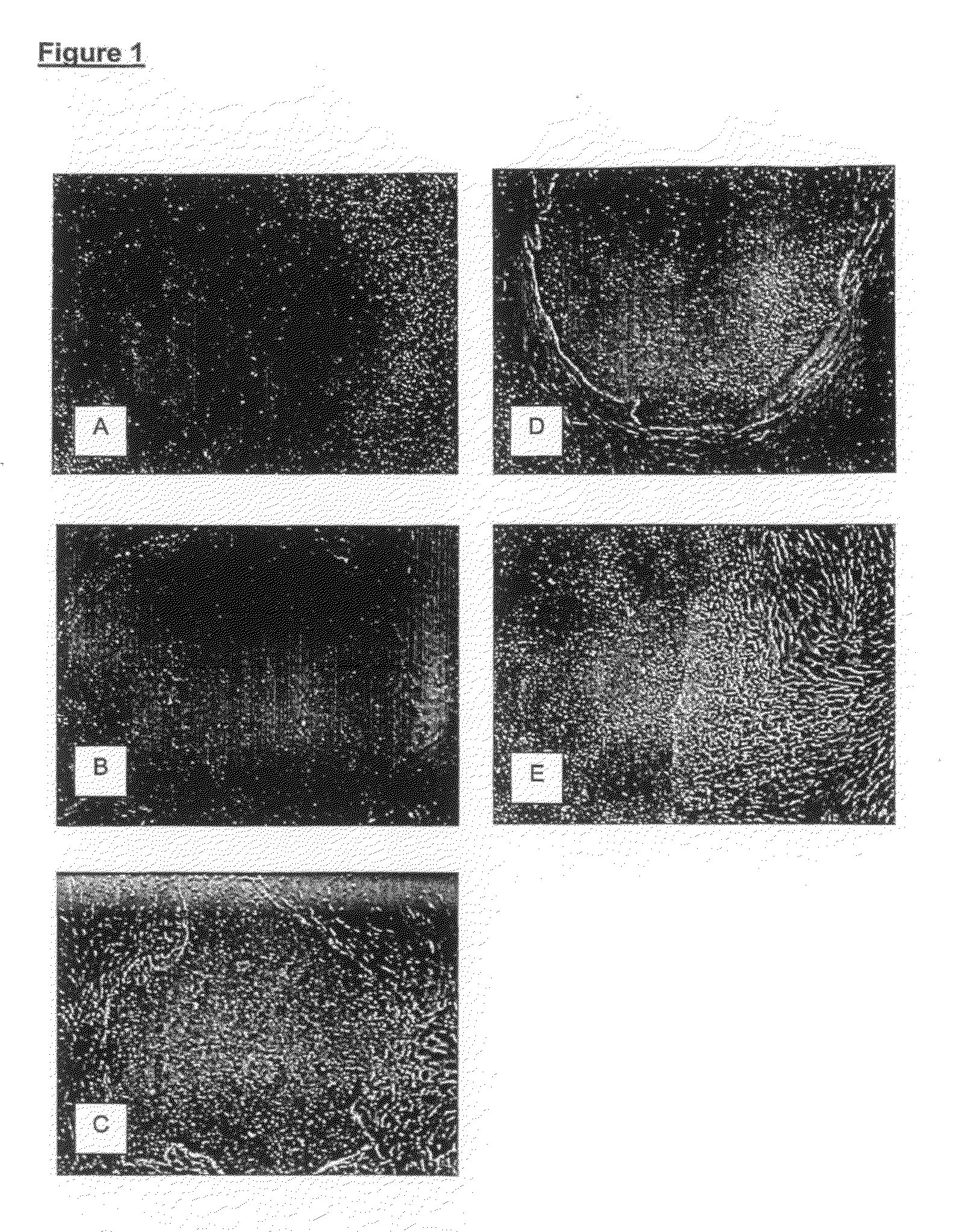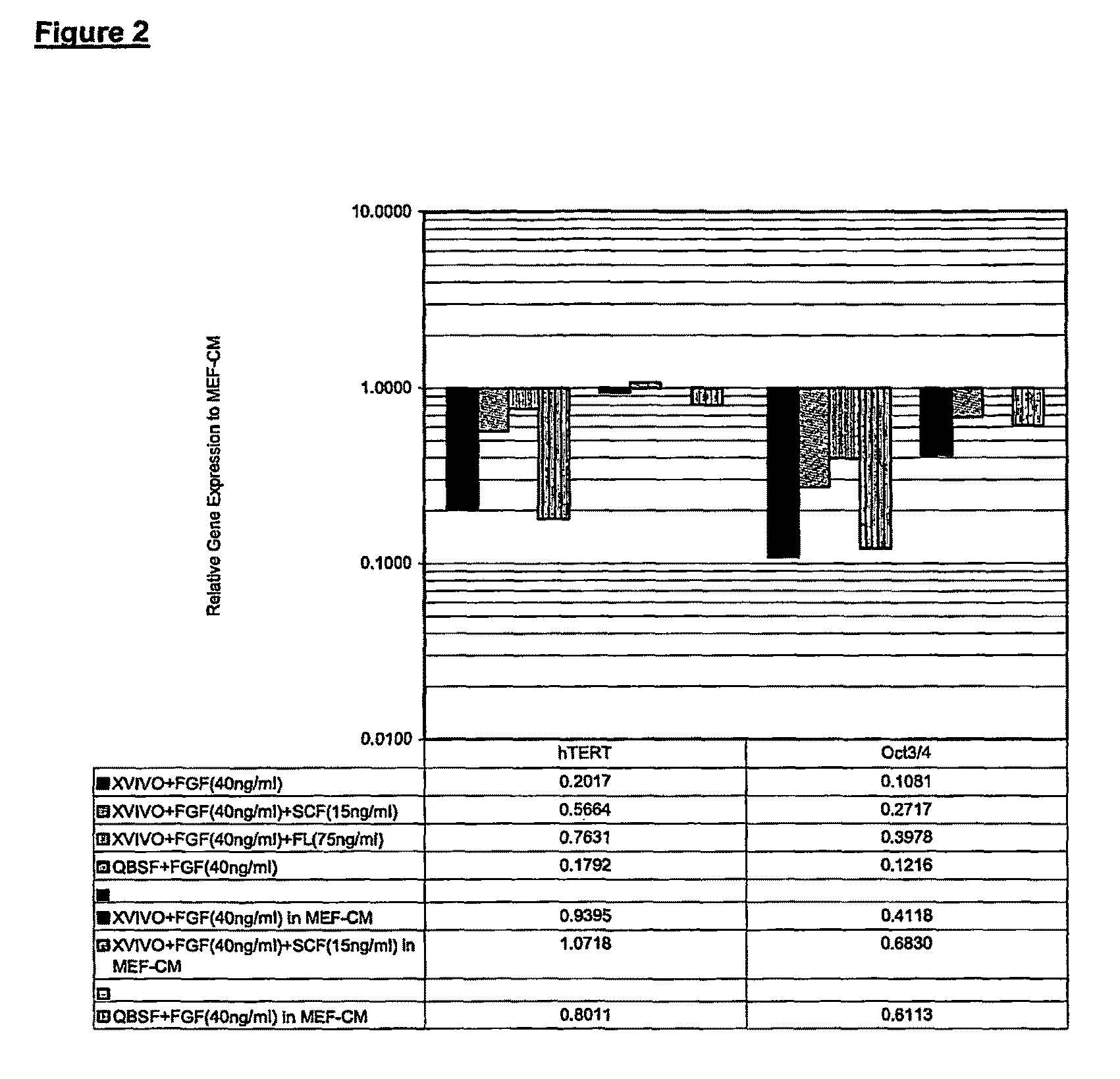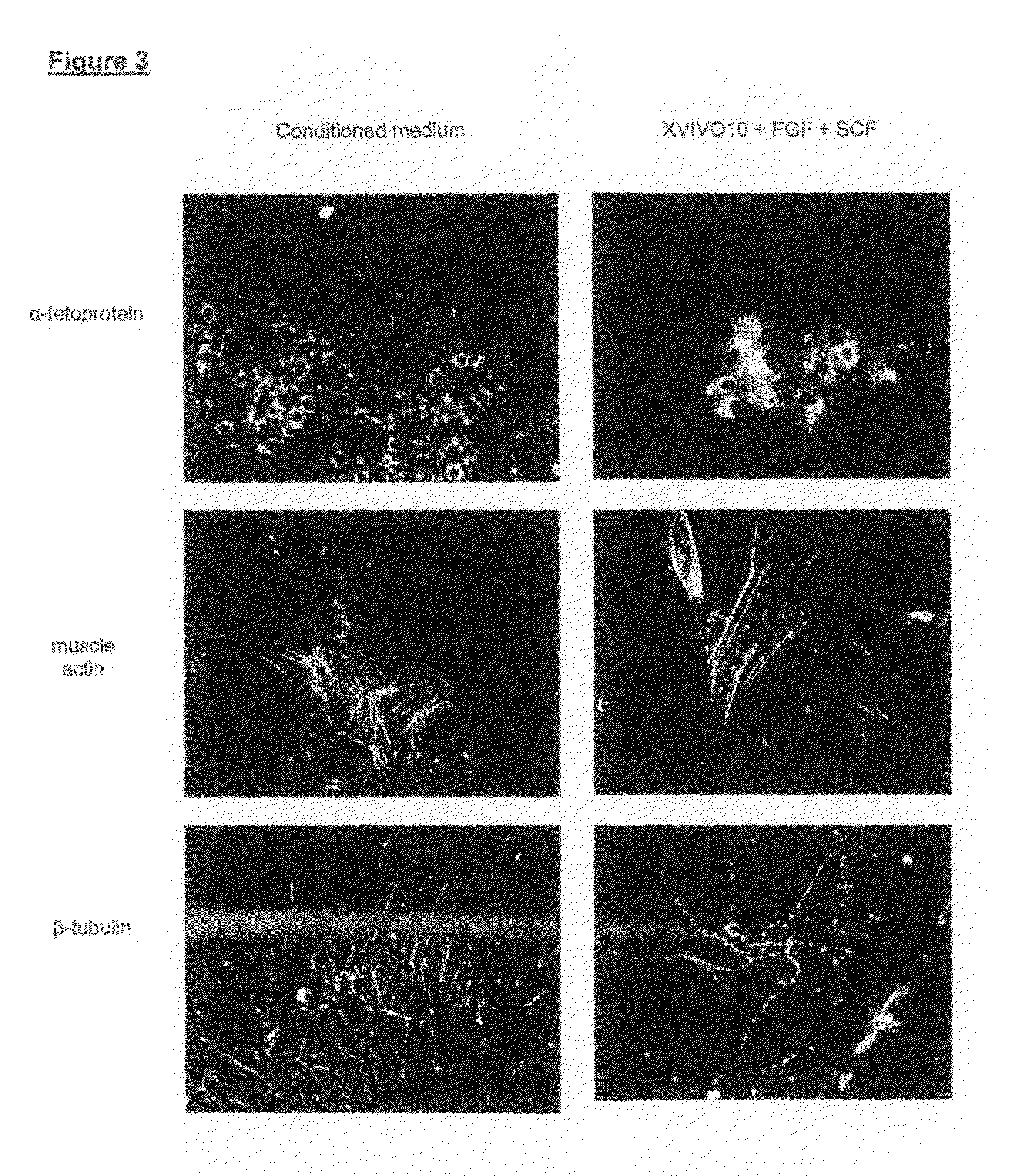Suspension culture of human embryonic stem cells
a technology of stem cells and suspension culture, which is applied in the field of suspension culture of human embryonic stem cells to achieve the effect of facilitating growth and manipulation
- Summary
- Abstract
- Description
- Claims
- Application Information
AI Technical Summary
Benefits of technology
Problems solved by technology
Method used
Image
Examples
example 1
Growing Pluripotent Stem Cells in Rapid Expansion Medium
[0089]A line of hES cells was obtained that had originally been grown on mouse embryonic fibroblast feeder cells, and then expanded for 20 passages in a feeder-free environment comprising Matrigel® extracellular matrix and conditioned medium, according to U.S. Pat. No. 6,800,480; as elaborated in Xu et al., Stem Cells 2005; 23(3):315-23.
[0090]The hES cells were next weaned onto X-VIVO™ 10 expansion medium from Biowhittaker; or QBSF™-60 from Quality Biological Inc. For use in these experiments, the X-VIVO™ 10 medium was supplemented with the usual goodies: namely, 2 mM L-glutamine, 1% non-essential amino acids (Gibco), 0.1 mM β-mercaptoethanol, and 8 ng / mL bFGF. The medium was further supplemented with 8 ng / mL or 40 ng / mL of bFGF (Gibco); 40 ng / mL of bFGF and 15 ng / mL of SCF (R & D System); or 40 ng / mL of bFGF and 75 ng / mL of Flt3 ligand (R & D System). QBSF™-60 medium was supplemented with 0.1 mM β-mercaptoethanol, 1% non-essen...
example 2
Culture of hES Cells in a Defined System Free of Animal-based Products
[0099]hES cells cultured in MEF-CM on Matrigel® were passaged to a fresh (non-conditioned) serum free medium: X-VIVO™ 10 supplemented with Glutamine, non-essential amino acids and β-mercaptoethanol, plus 80 ng / mL human basic FGF on Matrigel®, and then adapted to surfaces coated with human laminin. Alternatively, cryopreserved cells were directly thawed into the same medium containing 80 ng / mL hbFGF. The cells were passaged every 5-6 days using Collagenase IV.
[0100]Cultures grown under these conditions were similar or better than cultures on Matrigel®. (A) morphology for cells grown in mEF conditioned medium; (B) morphology fin defined medium on laminin; (C) Surface marker SSEA-4 expression in mEF-CM (H1p62) or defined medium (H1p34+28); (D) Expression of surface marker Tra-1-60 in mEF-CM or defined medium. Culture performance in the defined medium on laminin was superior: very large ES cell colonies were observed,...
example 3
Culturing hES Cells in Suspension
[0104]With a view to increasing the yield of hES cells per culture volume, the cells were cultured in suspension, and then evaluated for morphology and their ability to form differentiated cells representative of all three germ layers.
[0105]H9 hES cells grown on Matrigel® were harvested from 6-well plates and seeded into a spinner flask under the following condition[0106]Vessel: 100 mL spinner flask[0107]Inoculation (seeding) density: 3.6×105 cells / mL;[0108]Medium volume: 50 mL per spinner flask[0109]Medium used: mEF conditioned medium containing bFGF (8 ng / mL)[0110]Agitation rate: 20 rpm (Bellco carrier magnetic stirrer)[0111]Atmosphere: 37° C. CO2 incubator[0112]Medium exchange: Every other day (exchanged by letting the cells settle down and replacing the supernatant)
H9 hES cells were maintained in the spinner flask under these conditions for 6 days.
[0113]FIG. 4 (upper panel) shows the results. Following an initial decline during which the culture ...
PUM
| Property | Measurement | Unit |
|---|---|---|
| concentration | aaaaa | aaaaa |
| surface area | aaaaa | aaaaa |
| density | aaaaa | aaaaa |
Abstract
Description
Claims
Application Information
 Login to View More
Login to View More - R&D
- Intellectual Property
- Life Sciences
- Materials
- Tech Scout
- Unparalleled Data Quality
- Higher Quality Content
- 60% Fewer Hallucinations
Browse by: Latest US Patents, China's latest patents, Technical Efficacy Thesaurus, Application Domain, Technology Topic, Popular Technical Reports.
© 2025 PatSnap. All rights reserved.Legal|Privacy policy|Modern Slavery Act Transparency Statement|Sitemap|About US| Contact US: help@patsnap.com



